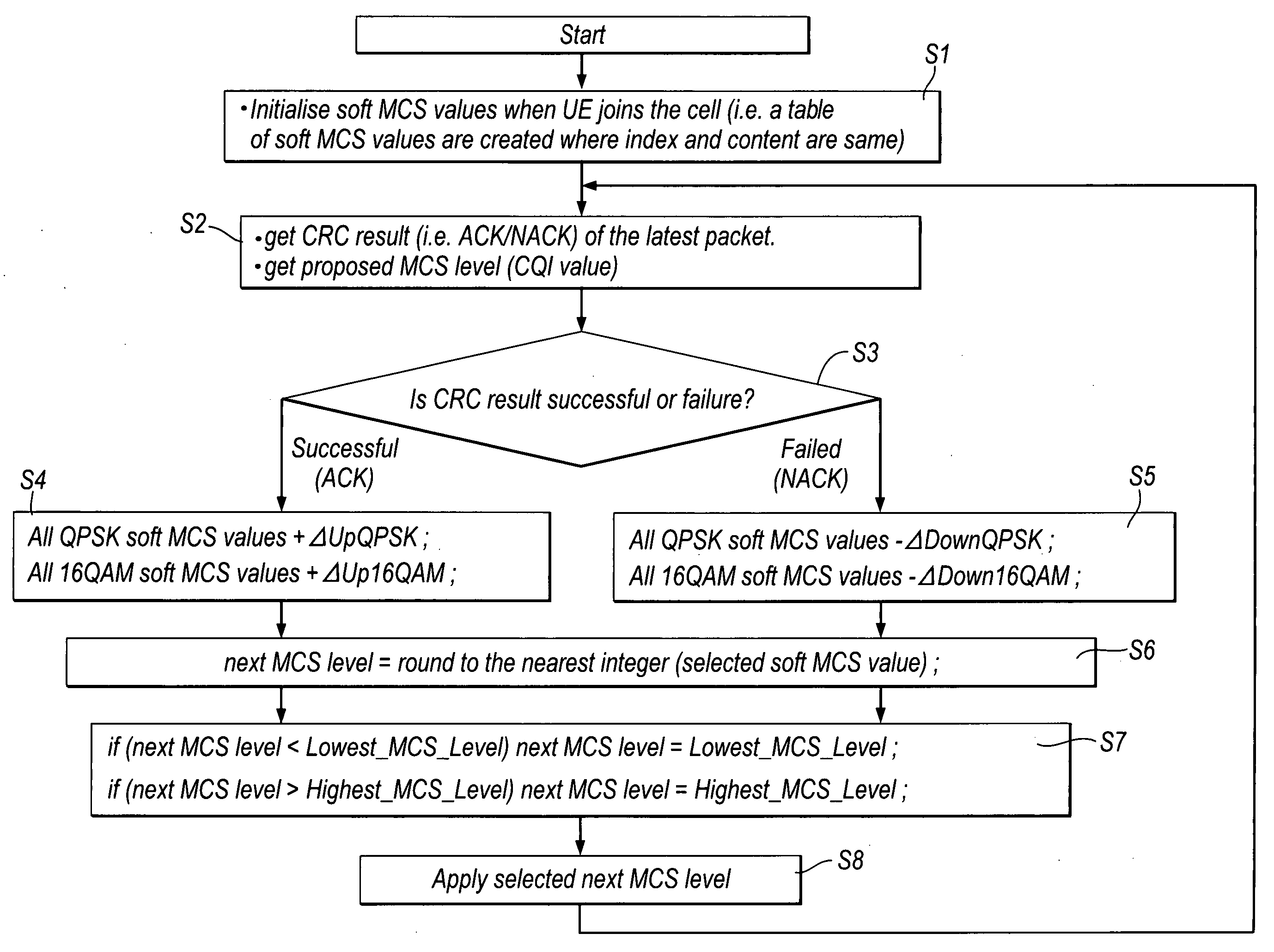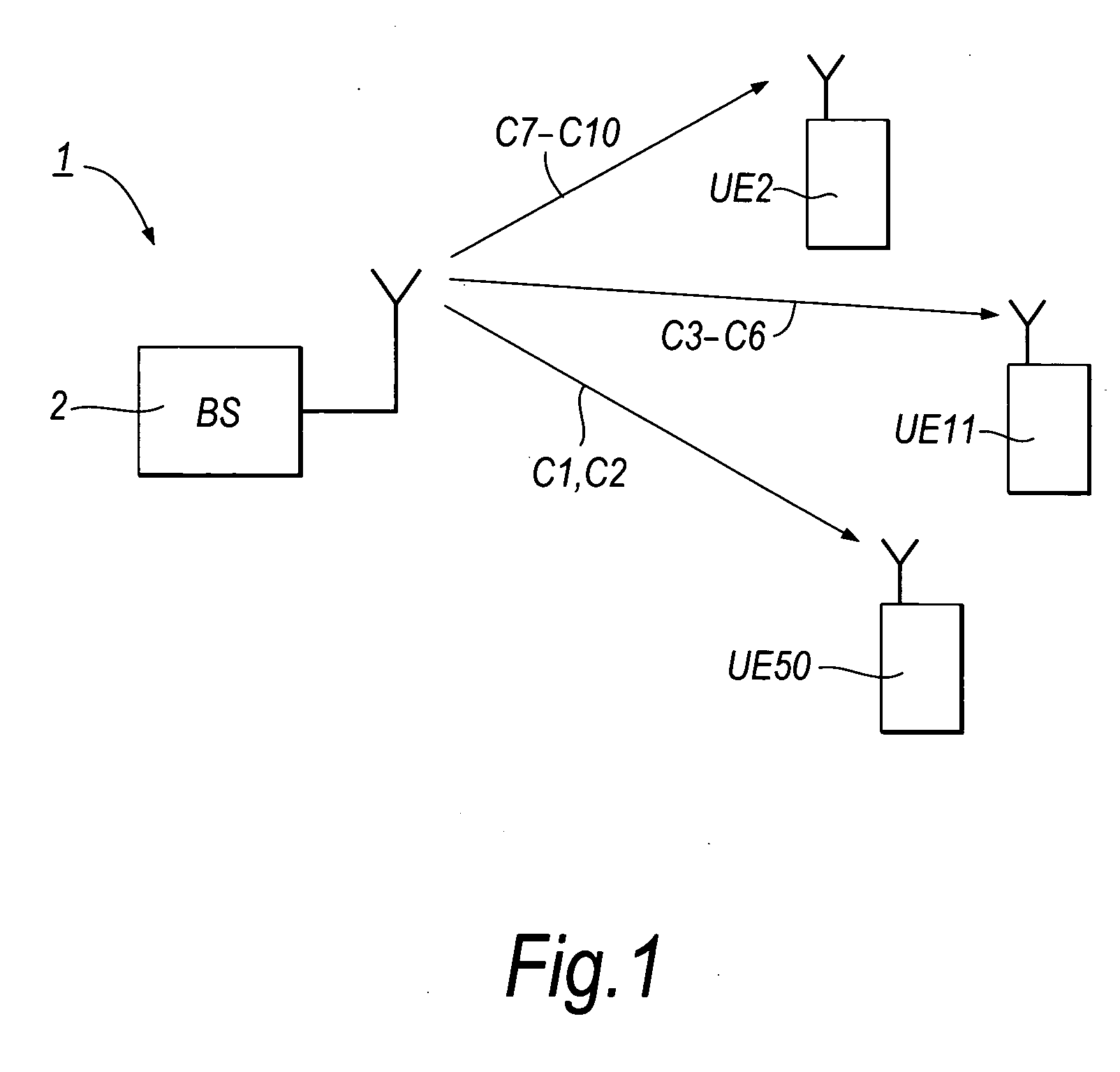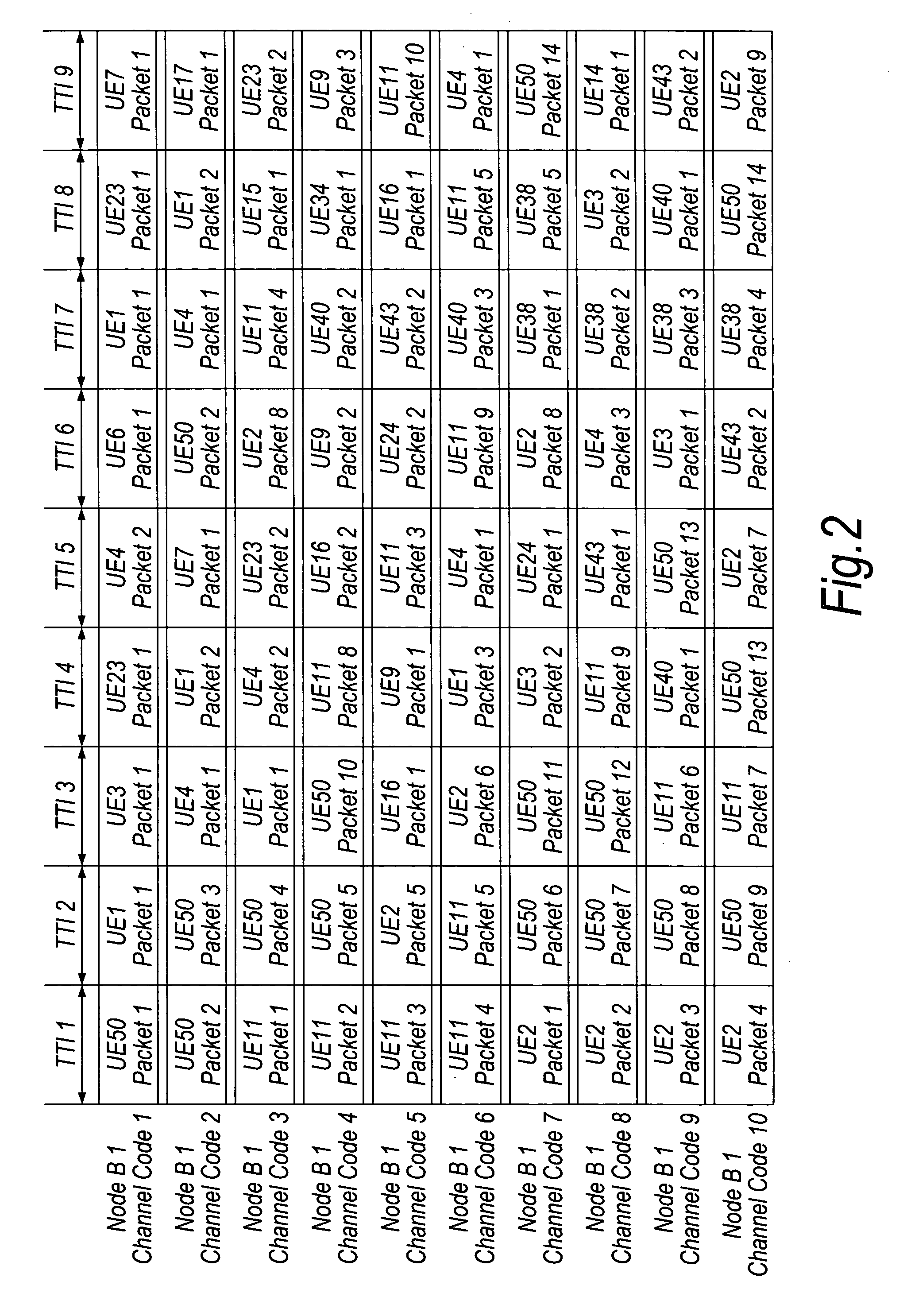Adaptive modulation and coding
a technology of modulation and coding, applied in the field of adaptive modulation and coding methods and apparatuses, can solve the problems of poor performance at lower mcs levels, poor method performance at high sir values, and inability to provide a satisfactory solution
- Summary
- Abstract
- Description
- Claims
- Application Information
AI Technical Summary
Benefits of technology
Problems solved by technology
Method used
Image
Examples
first embodiment
[0076] An AMC method according to the present invention will now be explained with reference to FIGS. 10 to 12. This embodiment is used to adapt the MCS level of a downlink packet access signal in an HSDPA system. Thus, in this embodiment the transmitter is part of the base station and the receiver is part of the user equipment.
[0077] In the first embodiment the base station maintains, for each UE in its cell, a table of so-called “soft” MCS values. An example of the soft MCS value table is shown in FIG. 10. The table 10 has an upper row 12 and a lower row 14. The table is also divided into a QPSK region 16 made up of the first 16 columns of the table, and a 16QAM region 18 made up of the remaining 7 columns of the table.
[0078] The upper row 12 of the table contains the set of available CQI values. These CQI values correspond to the values 0 to 22 described previously with reference to FIG. 5. In this embodiment, CQI values 23 to 30 are not available.
[0079] For each CQI value in t...
third embodiment
[0109] Nonetheless, despite these advantages, the requirement to hold the soft MCS values in table form may lead to an increased memory requirement, especially given that the soft MCS values are non-integer values. This disadvantage is overcome in the present invention shown in FIG. 19.
[0110] In FIG. 19, in place of the soft MCS values table, two parameters OFFSET_QPSK and OFFSET—16QAM are held and updated in respective offset units 22 and 24. The offset unit 22 has an input connected to an output of a first selection switch 26. The switch 26 has first and second inputs for receiving the first upward adjustment amount ΔUpQPSK and the first downward adjustment amount ΔDownQPSK respectively. The second offset unit 24 has an input connected to an output of a second selection switch 28. The switch 28 has first and second inputs connected for receiving the second upward adjustment amount ΔUp16QAM and the second downward adjustment amount ΔDown16QAM respectively. Each of the switches is c...
PUM
 Login to View More
Login to View More Abstract
Description
Claims
Application Information
 Login to View More
Login to View More - R&D
- Intellectual Property
- Life Sciences
- Materials
- Tech Scout
- Unparalleled Data Quality
- Higher Quality Content
- 60% Fewer Hallucinations
Browse by: Latest US Patents, China's latest patents, Technical Efficacy Thesaurus, Application Domain, Technology Topic, Popular Technical Reports.
© 2025 PatSnap. All rights reserved.Legal|Privacy policy|Modern Slavery Act Transparency Statement|Sitemap|About US| Contact US: help@patsnap.com



